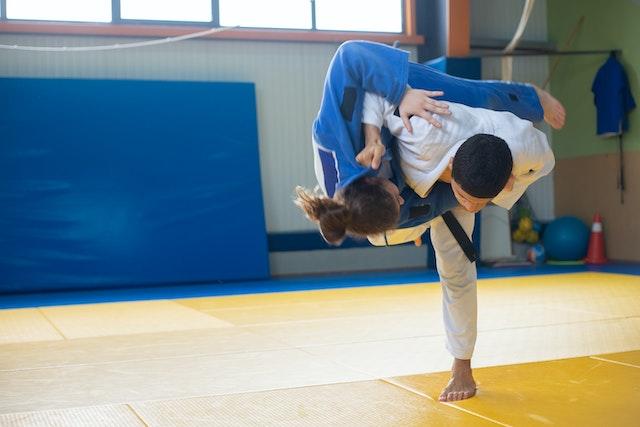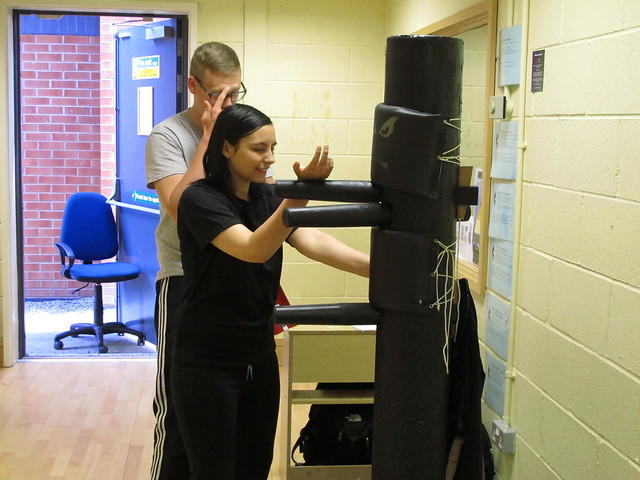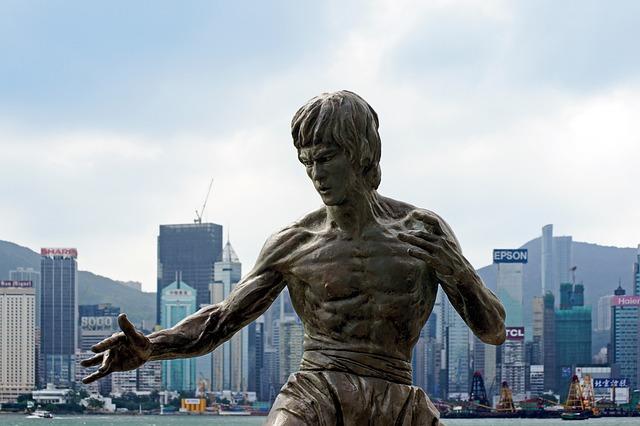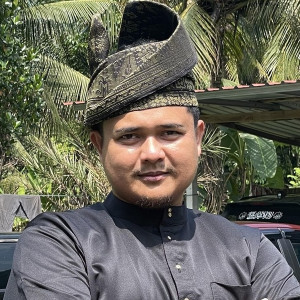Martial arts encompass many different techniques and styles used for combat, self-defence and physical fitness. It is an ancient practice which is believed to have originated in Asia and has spread throughout the world over time. Some of the famous forms of martial arts are Kung Fu, Judo, Karate, Muay Thai, Boxing and many more.
China is known for Kung Fu while Japan has several popular martial arts such as karate, judo and kendo. India on the other hand, has a few like silambam and kalaripayattu. Martial arts are not only popular in Asia but can be found all over the world. For example, martial arts have become popular in the western world, with thousands of schools and dojos offering training in a variety of styles.
Brazilian jiu-jitsu, for example, is a highly technical grappling art that has gained popularity in recent years, with many elite fighters and champions. If you are interested to know more about the different types of martial arts that exist around the world, you can check out Unique Martial Arts from Asia, Africa & Australia.
These martial arts exist and have a chance to evolve thanks to the martial artists around the world who are dedicated to their craft. The intense training regime in order to learn and improve their physical strength, techniques and endurance shows the enthusiasm and respect they hold for their chosen martial arts.
Let's get to know some of the greatest martial artists around the world who come from diverse backgrounds and have one thing in common which is their mutual passion and dedication to martial arts.

Bruce Lee
Born as Lee Jun Fan in 1940, he is an actor who is considered a legend of the Jeet Kune Do martial art which is based on fusion martial arts ideology that draws from various combat disciplines. It is largely praised for laying the groundwork of mixed martial arts (MMA).
Bruce was originally a practitioner of Wing Chun and was responsible for introducing martial art in the United States as well as popularizing it through action on the silver screen.
Throughout his life, Bruce only acted in four martial arts films which were The Big Boss (1971), Fist of Fury (1972), Way of the Dragon (1972) and Enter the Dragon (1973). These four films made quite a big impact especially changing the way Asians were portrayed in movies.
Unfortunately, Bruce who achieved iconic status died suddenly at the age of 32 while in the process of completing the film The Game of Death. He was buried in Seattle, United States in 1973. His passing left a huge legacy to the world of martial arts and is mourned by fans of kung fu movies until today.
Jigoro Kano
When he was a teenager, Jigoro Kano was bullied and needed a way to defend himself which sparked his interest to study Jujutsu. At that time, Jujutsu experienced a dying period, because it was considered an ancient and dangerous martial arts system. But that didn't deter Kano from mastering it.
He actually learned from many leading teachers and took the best techniques from each school, while eliminating the inappropriate ones. Kano's persistence and discipline gave him a way to find his own style.
Kano combined jujitsu styles into a form that eventually became known as judo. His Kodokan style of judo is still alive today.
He wanted judo to be included in Japanese schools and transferred some of his more dangerous moves to make this happen. In 1911, largely through his efforts, judo was adopted as part of the Japanese education system. In 1964, perhaps as a testament to one of the greatest martial artists and innovators of all time, judo became an Olympic sport.


Masahiko Kimura
Masahiko Kimura was a renowned Japanese martial artist who became famous for beating Helio Gracie who was the founder of Brazilian Jiu-Jitsu. Kimura won during the match with a move that broke his opponent's arm. Later, the reverse ude-garami (arm wrap, shoulder lock) he used to win fights was renamed "Kimura."
He dominated the judo world during his lifetime, achieving many famous victories and titles. He was promoted to yondan (fourth dan) at the age of 15 after only six years of training. In 1935, he became the youngest-ever deity (fifth-degree black belt), after defeating eight opponents at the Kodokan Dojo. At the age of 20, he became the All Japan Open Heavyweight Judo Champion, a title he held in undefeated fashion for 13 years.
He revolutionized how grappling combat sports were fought by introducing many new techniques and strategies. The kimura lock, which is named after him, is a grappling submission hold that is still widely used in various martial arts competitions.
Kimura is known for his intense and difficult training, which at one point consisted of 1,000 push-ups and nine hours of training each day. He is a true pioneer in the martial arts world and his contributions to the sport helped expose the martial art to the world.
Yip Man
Ip Man or Yip Man is a famous Chinese martial arts teacher of Wing Chun. He was a Chinese warrior whose life was filled with amazing twists and turns for several decades. From police officers and refugees to family heads and kung-fu experts, his days were filled with a variety of activities.
His greatest influence can be seen in two arenas. First, many of his students went on to teach, leaving a great influence on China and its surroundings. Furthermore, some of his students, Grandmaster William Cheung and Bruce Lee, later had a great influence on the world of martial arts.
Yip Man's life has been told in many films, albeit with some liberties, including in the film "Ip Man," starring Donnie Yen. He has become something of a cult hero because of this, which increases his influence. The movie has also sparked an interest among many to find resources to learn martial arts such as Wing Chun.

Helio Gracie
There is no Brazilian Jiu-Jitsu practitioner who has had such an extraordinary impact on this discipline as Grandmaster Helio Gracie. Brazilian jiu-jitsu is a mixed martial art form of the traditional Japanese combat sport, that emphasises grappling rather than strikes.
Mitsuyo Maeda, one of the great judo practitioners who established a martial arts school in Brazil taught the Gracie brothers. However, Helio Gracie was a young man who was physically frail compared to his siblings who were stronger and more athletic.
Therefore, Gracie modified the techniques using force and leverage so that he would not be at a disadvantage with his brothers. This led to the creation of Brazilian Jiu-Jitsu.
Helio openly challenged reputable martial artists in order to prove the effectiveness of his technique. Some of the martial artists he fought are Wladek Zbyszko who was the one-time world heavyweight wrestling champion, and Judoka who was ranked second in the world at the time.
Gracie died a 10-degree red belt in Brazilian Jiu-Jitsu, which is the highest belt received by anyone in this field.
If you would like to learn about the different types of martial arts in another part of the world, do check out What are the Well Known Martial Arts in Europe, South America & North America?
Royce Gracie
For years, people have wondered which martial arts style is the best. Often, this conversation, at least in America, comes up with stand-up styles like karate, taekwondo, kung fu, and boxing.
But in 1993, 170-pound Royce Gracie changed the world's perception, winning three of the first four UFC championship tournaments. He did it by using the art nicknamed Brazilian Jiu-Jitsu, which his father, Helio Gracie created.
With his win, Gracie changed martial arts forever, putting mixed martial arts on the map. Today, almost every high-level fighter practices his father's art, and Gracie, a sixth-degree black belt holder, has become as influential as anyone in the discipline.
Superprof is an online platform which connects students with tutors from all around the world. Superprof tutors are highly qualified to teach their respective subjects including martial arts. The tutors or instructors teach martial arts for training and fitness purposes
You also get to filter the martial arts instructors according to your preferred location, maximum budget as well as the languages of instruction. You can choose to attend classes online or face-to-face. Arrange classes according to your convenience.
Everyone has their own learning style. If you have a private instructor who will design the lessons according to your learning style, you will be able to follow the class better, have a good understanding of the martial arts methods and be able to progress faster.
Search for martial arts instructors here on Superprof!















